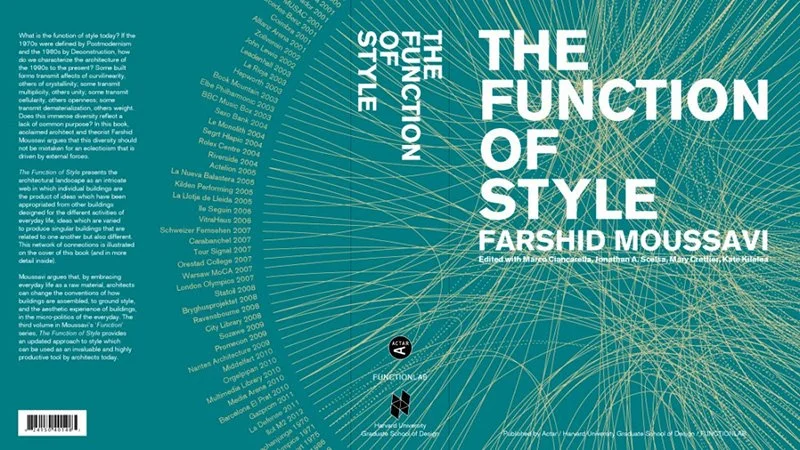What is the function of style today? If the 1970s were defined by Postmodernism and the 1980s by Deconstruction, how do we characterize the architecture of the 1990s to the present? Some built forms transmit affects of curvilinearity, others of crystallinity; some transmit multiplicity, others unity; some transmit cellularity, others openness; some transmit dematerialization, others weight. Does this immense diversity reflect a lack of common purpose? Farshid Moussavi will present the third volume in her "Function" series, The Function of Style, alongside projects of her London based firm, FMA, to argue that to see the coherence that underlies the diversity in contemporary architecture, style must be defined differently today, not as a representation but as a source of action through the political potency of affect.
A Constructive Madness wherein Frank Gehry and Peter Lewis spend a fortune and a decade, end up with nothing and change the world
Written by Jeffrey Kipnis, the Wexner Center's interim chief curator of exhibitions and curator of architecture and design, A Constructive Madness captures the human drama surrounding an incredibly significant, but ultimately unrealized, architectural project. Peter Lewis, chair of Ohio-based insurance giant The Progressive Corporation, hired architect Frank Gehry to design a house in suburban Cleveland.
Over the next nine years, the project grew in scope, ambition, and budget and became a touchstone for the architectÌs most experimental ideas. The Lewis house (and an enigmatic piece of red velvet) played a central role in transforming Gehry's style and his attitude toward the use of the computer as a creative tool in design.
Written by Jeffrey Kipnis, the Wexner Center's interim chief curator of exhibitions and curator of architecture and design, the film premiered in August at a benefit screening presented by the Aspen Filmfest. To Kipnis A Constructive Madness is "not a lecture or a lesson, but an entertaining story, a drama expressed in the medium of architecture." (61 mins.)
THE AESTHETICS OF IMPERFECTION RECONCEIVED: IMPROVISATIONS, COMPOSITIONS, AND MISTAKES…..imperfection is not toleration of errors and imperfections, but a positive aesthetic….imperfections can become new styles or kinds of perfection…..









